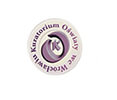Print yourself a medication
3 July 2016
Soon, medicines will be printed in 3D in doses precisely adjusted to a given patient’s needs – says Polish pharmacist Justyna Skowyra, co-founder of Printed Health, a portal connecting the world of pharmaceutics with the world of 3D printing technology.
What do physicians think about 3D printing?
Justyna: Currently, 3D printing is a remote concept for many physicians but the situation is changing day by day and further applications are winning physicians’ trust. Thanks to incredible opportunities created by 3D printing, we can improve many medical procedures or create brand new solutions that improve patients’ lives and health.
For now, we are only using 3D printing for special tasks but we expect this to change.
Do older generations of physicians accept these technological novelties?
Justyna: 3D is surely a chance for the younger generation to participate in creating such changes in medicine, which one day will become standard. This makes the huge interest of young medics in 3D printing even more pleasing. Contemporary medicine will be the combining of human sciences with technology to an increasing extent.
Fortunately, young people are receiving more and more support in developing their passions – there are scholarships and special scientific programmes available. I can especially recommend the ADAMED SmartUP educational programme, which offers great scientific support for youth talented in exact and natural science.
Some of them will surely become physicians for whom 3D technology will be part of their everyday life.
Soon, there will be the first conference in Poland, during which new 3D technology solutions for pharmacy will be presented…
Justyna: Today, almost every medication is available in 2-3 different doses. The problem arises when a child or an elderly person, or a patient with central nervous system disorders needs individual treatment. For example, while there is no prednisolone available in 2.5 mg doses, patients must take several tablets or divide them. And sometimes even this solution is not available. This may be highly problematic in therapy.
How can 3D printing change this?
Justyna: The solution I have been working on allows for low-cost production of medication doses for a given patient – e.g. prednisolone in 2.5 mg or even 3.75 mg doses. Currently, the method is still in the study phase, but in a few years we expect every hospital to have laboratories producing 3D-printed medications.
The process of creating the tablets is based on the FDM method that is Fused Deposition Modelling. A polymer containing a known amount of medication is heated and applied, semi-liquid, on the substrate. After the first layer congeals, further layers are applied until the entire 3D object is created. By modifying the size of the tablet, that is by changing the amount of polymer with medication, we can produce medications in different doses.
Together with Effiom Adrian Uman-Ntuk, also a new technologies enthusiast, you created Printed Health.
Effiom: It is probably the only place in the world where 3D technology combines with the world of medicine.
All the media are into three-dimensional techniques, but in a rather general manner, with no particular interest in their application in medicine.
Justyna: The goal of Printed Health is to create an area for sharing knowledge and for discussion between representatives of medicine and experts in print as such. We believe that facilitating experience sharing and the creation of interdisciplinary teams will have a significant impact on further development of medical applications of 3D print, making it grow even faster.
Where exactly is 3D print currently used in medicine?
Effiom: 3D print is used everywhere where an individual approach towards therapy is required.
Skull or heart models help prepare for very complicated surgeries, whereas titanium implants, fitted to the attrition in the patient’s skull, are directly implanted. There are many known applications such as in dentistry: we are talking about solutions that facilitate treatment e.g. scanning and printing a 3D dentition model instead of collecting a classical dental impression. Another application is 3D-printed hands, very popular in the media recently.
Interviewed by: Joanna Jurek (aged 19)
First year Biomedical Sciences student at the Ulster University, Northern Ireland and ADAMED SmartUP Programme Ambassador since 2014. Laureate of the 2014 Intel ISEF Los Angeles competition and of the Innovation Fairs in Croatia and Germany (gold and silver medallist). TEDx Youth 2014 Krakow speaker, and a speaker at the international 2015 P&G “Always like a Girl” programme. Currently, a co-author of the Origami BioBandage project.
Her achievements were described by the Financial Times in 2014.



























